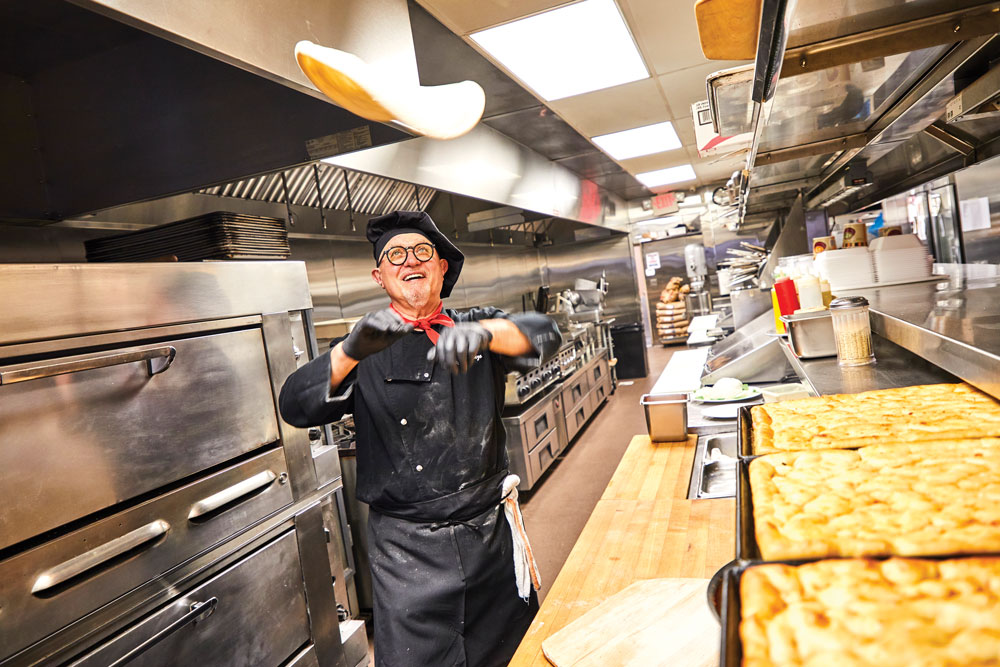By Tracy Morin
A clean, attractive dining room is a must-have, but we all know the real magic starts in the kitchen. The size of your kitchen doesn’t necessarily matter, but smart, high-functioning design does, especially for frazzled staff on a busy night when the online orders are piling up in the POS and the line is stretching out the door. We talked to some leading pizzeria operators to uncover the secrets of great kitchen design, from allowing space for social distancing to achieving a full “kitchen theater” effect.
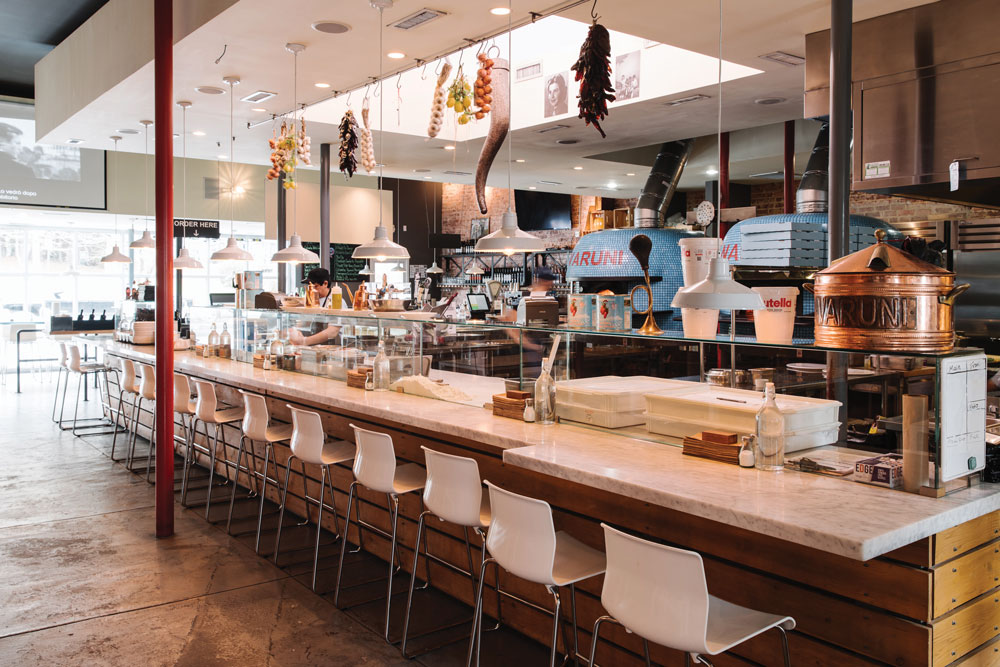
“I wanted to create a space that was modern but also had special touches of Neapolitan culture—the perfect juxtaposition of the old and new world. The two ovens are the main attractions and are set in the middle of our kitchen and restaurant.”
— Luca Varuni, Varuni Napoli
The Neapolitan Experience
Luca Varuni, Owner/Executive Chef
Varuni Napoli, Atlanta, GA (two locations)
I wanted a big, open kitchen that would allow guests an immersive and interactive experience from start to finish. Everything our team does happens in front of our guests, like at an open market in Naples.
I wanted to create a space that was modern but also had special touches of Neapolitan culture—the perfect juxtaposition of the old and new world. The two ovens are the main attractions and are set in the middle of our kitchen and restaurant. The main materials used for the buildout were brick, wood, marble and glass. We showcase all of our products—including DOP-certified San Marzano tomatoes, Calabrian peppers, black truffle oil from Sorrento, salt blessed by the pope, buffalo mozzarella and more—around the restaurant. We also have a glass-enclosed, temperature-controlled room where we make our dough daily.
Varuni Napoli’s design offers the opportunity to give an inside-out view of what we’re doing to make our pizza. Our pizzaioli put a ton of training and hard work into their craft, so being able to showcase that for the enjoyment of our guests is important to them and helps increase morale among the team. We also have a 15-seat pizza bar, where guests can interact with the pizzaioli and ask questions.
Be smart about the way you use your space. You don’t necessarily need a big kitchen to be successful; it’s more important to have a multifunctional kitchen. Spend time making sure you achieve a smooth operation. Make sure to create a space that is comfortable for your kitchen team.
We Neapolitans are known to be very superstitious, and I’m no exception! At both of my pizzerias, I have the biggest cornicello (Neapolitan horn) you will ever see hanging from the soffit in the middle of the kitchen. There’s also another horn located on the top shelf of our bar. It’s part of my Neapolitan culture—it’s a good luck charm that will protect you from the evil eye!
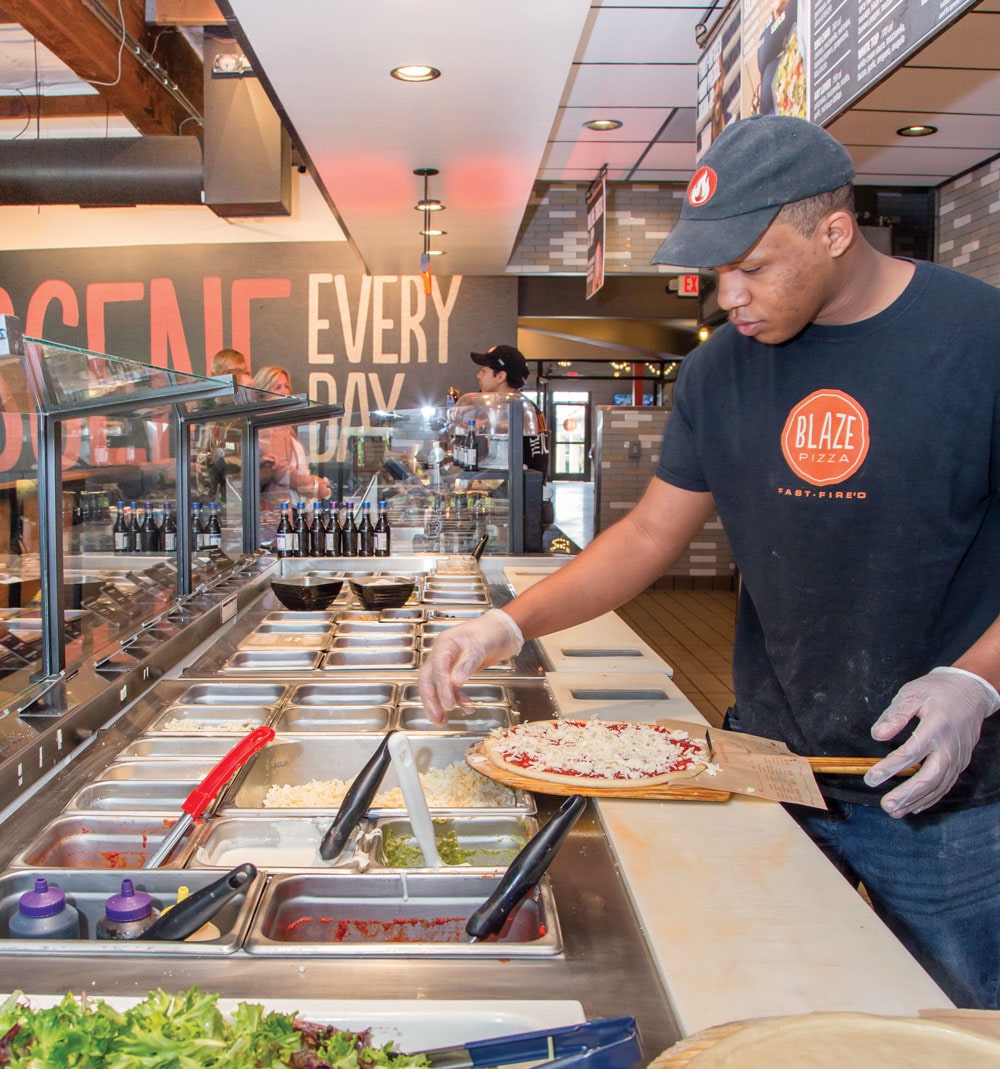
The Fast-Casual Chain
Brad Kent, Executive Chef
Blaze Pizza, Headquartered in Pasadena, CA (342 locations)
When conceptualizing our kitchens, we had several elements in mind, the first being visibility. We use outstanding-quality, all-natural ingredients that, by virtue of their freshness, have beautiful, vibrant colors and visible textures. It’s important for us to showcase those quality ingredients to our guests even before the pizzas hit the ovens. To support our assembly-line presentation, we have a glass shield between the guest and the pizza assembling crew member, providing an inside look at the prep process.
We purposely designed our kitchens with an open floor plan so guests could easily view our unique units, ranging from our oversize Hobart mixer for dough making to our huge live-fire oven. Every step of the pizza making process—cutting, garnishing and baking—is visible from all areas of the dining rooms. When possible, we try to position our oven, which is the heart of our 360° experience, so that it is noticeable from the street and able to attract passersby.
Every Blaze Pizza kitchen features the following amenities to impact our efficiency and environment:
- Larger walk-in coolers for space to accommodate large quantities of dough balls fermenting a full 24 hours
- Custom-designed dough presses for consistency, quality and speed
- Large open-top assembly lines for guests to view the variety and quality of our ingredients
- A large, open-hearth, live-fire oven for visibility and to produce chef-quality fast-fired pizzas in a “kitchen theater” environment
- A second assembly line for online and third-party orders so that guests who visit our restaurants are able to receive personalized and uninterrupted service
- A long assembly line that was great for speed before COVID-19 and now allows for social distancing between our crew members behind the line
Our advice: Design for the level of business you hope to achieve, and then add a bit more capacity. At the same time, don’t get too caught up in future-proofing your kitchen for every possible innovation. So many brands invest too heavily on future scenarios while sacrificing the core of their business today. Innovation is something you’re never done doing. Be prepared to pivot when the opportunity presents itself.
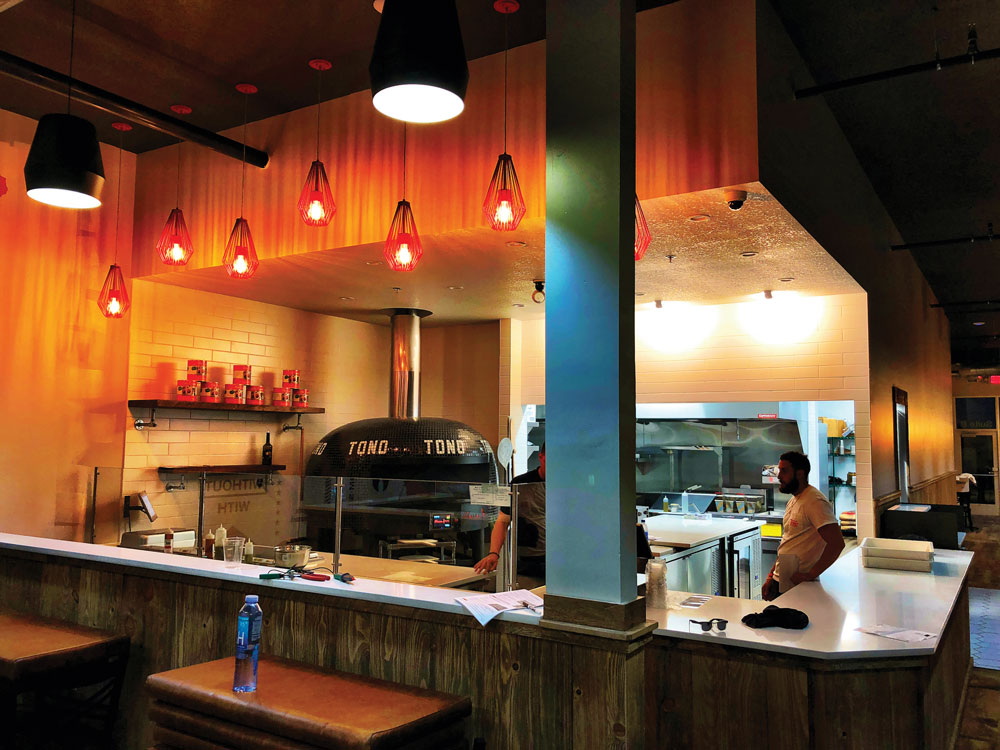
“Consider flow of product in the kitchen. How do the raw ingredients (and the staff carrying them) move around the kitchen in a fashion that is fluid?”
— Shaz Khan, Tono Pizzeria + Cheesesteaks
The Dual Concept
Shaz Khan, CFO and Co-Owner
Tono Pizzeria + Cheesesteaks, Maplewood, MN (two locations)
We’re a fast-casual brick-oven pizzeria with cheesesteaks, and we keep two things at the forefront: customer visibility and flow of materials/staff in the kitchen. With limited real estate, there are two ways to approach design-from-scratch: One is to design form around function, and the other—which we do—is to design function around form. Each has its own tangible benefits.
Beautiful spaces create a more pleasant environment. At the heart of our kitchen is a hand-built brick oven that’s constructed in-store. We want this to be the centerpiece that grabs the customer’s attention. Everything else revolves around this piece. Determine what your centerpiece is—and if such a feature doesn’t exist, place the focus on branding and staff.
Customers really love seeing their food being made; it offers transparency into the process, validates safety and health processes, and builds trust between the consumer and the brand. Use glass displays between pizza makers and the customer, with a lot of open space. Lighting is also a huge factor, as the proper temperature and placement of lighting can amplify ambience and help direct customers’ eyes to the elements you desire.
Finally, consider flow of product in the kitchen. How do the raw ingredients (and the staff carrying them) move around the kitchen in a fashion that is fluid? We make sure that the dough prep is done in one area, the visually stunning dough stretching and tossing is happening in the line of sight of customers (as are the topping additions), and there’s an island where our 12” completed pies can land after exiting the visible flames of our brick oven.
To accomplish all of this, we work with our equipment supplier to lay out all the equipment and then mock up our movement in the space by taping off areas, simulating the equipment before it’s installed, while we are under construction. In the pandemic era, this is even more necessary—to ensure we are complying with social distancing, without creating a disconnection between our brand and our customers.
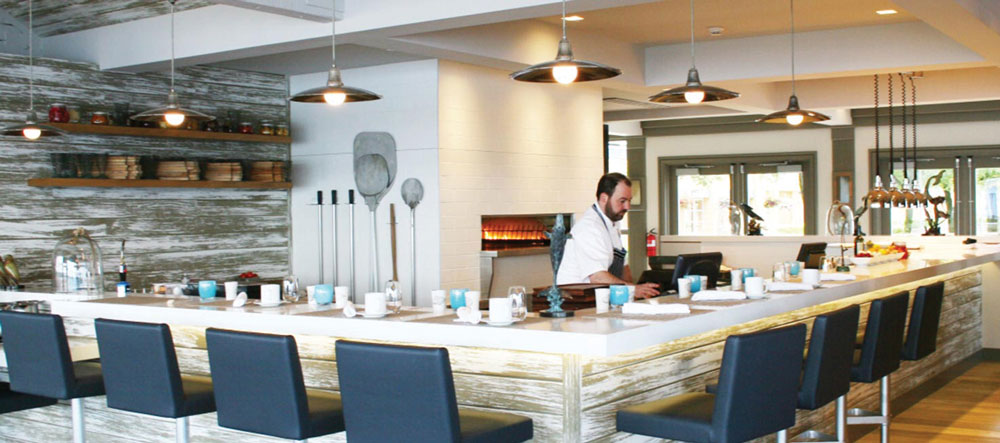
“A perfectly designed kitchen should allow the kitchen staff to operate like a well-trained orchestra. The type of equipment selected should not affect the flow if well-planned and coordinated.”
— Brandon Lehman, SCGWest
Expert Input
Brandon Lehman, Co-Founder and Managing Partner
SCGWest, Newport Beach, CA
For our clients who offer pizza, the kitchen layout is specialized for each concept’s offerings and kitchen size. For example, a pizza-to-go establishment (like Domino’s) has much different requirements than a full-service restaurant. For Domino’s, we design the kitchen purely centered around high volume and efficiency. The kitchen is positioned around the pizza oven, while other menu items, like chicken or sandwiches, utilize the same preparation tables, toppings and pizza oven for greater flexibility and efficiency.
One of our longstanding clients, Waters Edge Wineries, has a menu focused on items that complement its wine offerings, and pizza and flatbreads are at the top of that list. These kitchens are designed much differently—with space and flexibility in mind and with equipment selected to allow menu items to be added or taken away if they prove to be unpopular or not a good fit for the local region. This allows the restaurant to offer seasonal menu items.
Overall, though, a commercial kitchen should be looked at as a “food factory.” A lot of kitchen equipment, food preparation equipment and refrigeration equipment are all packed into a small space. So we really stress the importance of planning, planning and more planning. Although we are in the development and construction industry, we first sit down with our clients to understand their exact menu items and the projected volume of each menu item to understand what type of ingredients will need to be readily available. If there is a chef, we involve him. It may take multiple meetings to understand how he likes the flow of the kitchen, but this step gives the chef a sense of ownership in design—and sometimes the smallest tweak can make the food preparation and line cook’s jobs much easier.
A perfectly designed kitchen should allow the kitchen staff to operate like a well-trained orchestra. The type of equipment selected should not affect the flow if well-planned and coordinated. One more tip: Implement technology and eliminate clutter or unneeded kitchen equipment. We see all too often excess kitchen equipment in place that does not get used and is ultimately in the way or impeding the flow of the kitchen.
Tracy Morin is PMQ’s senior copy editor.



